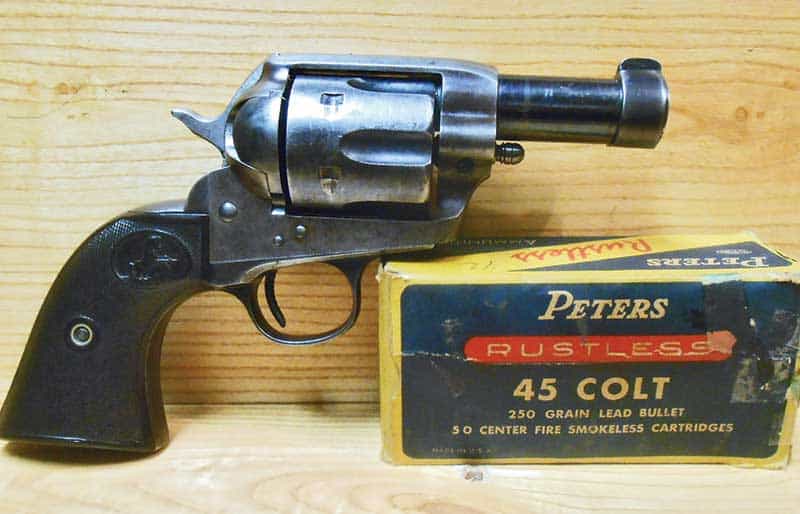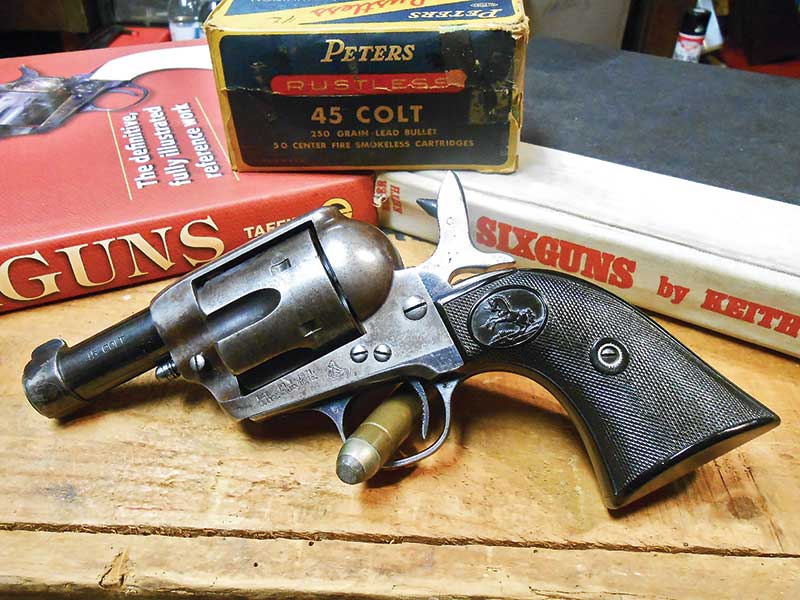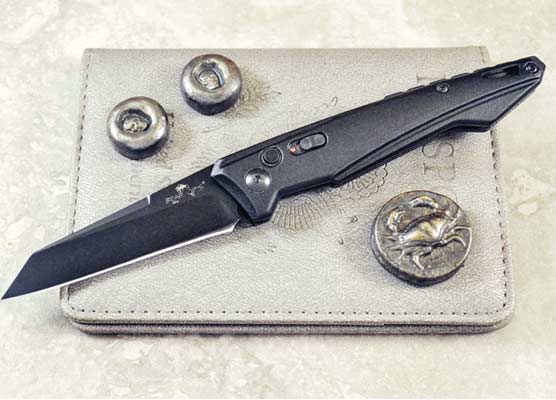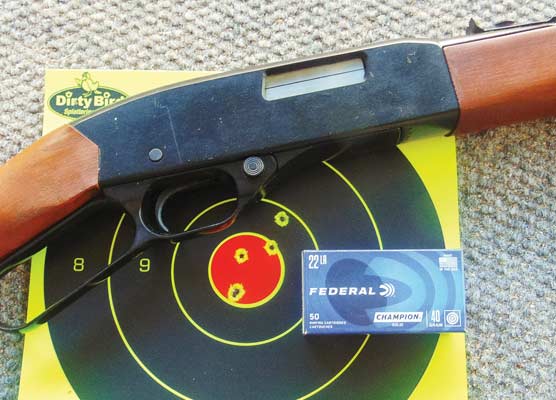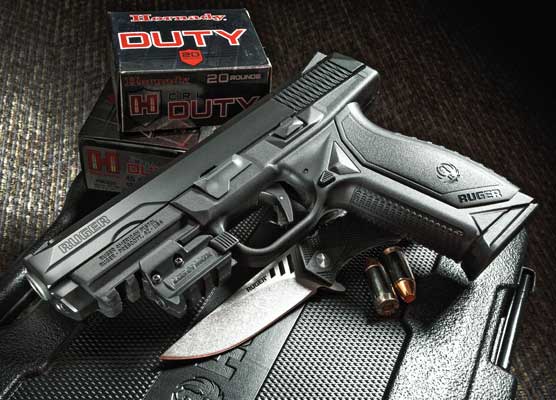The Croft/ Keith Slip Gun
This Cut-Down Colt SAA May Well Be
The Holy Grail Of Belly Guns
Elmer Keith’s Sixguns was first published in 1955, updated in 1961 and has been reprinted several times over the past 5+ decades. As all gun books more than a few hours old it is definitely dated, however it still contains much valuable information. Many of his principles, just as with those of Col. Cooper, Col. Askins and Skeeter Skelton still apply today.
In his chapter on long range shooting, Keith says, “Effective long-range revolver shooting requires as much, perhaps more, practice than any other phase of the game. One must learn the trajectory of his pet load and how much front sight to hold up above the level of the rear sight notch to attain different ranges. With enough practice, one becomes proficient and could surprise the natives. We had the Zane Grey outfit here on a two-month pack trip in 1931. One day the boys started shooting at a rock at 400 yards with their .30-06 Model 1895 rifles… They were far from expert rifleman and we laid down with our back against the log for a perfect back and headrest and with a 7-1/2-inch .44 Special S.A. Colt, with target sights, held with both hands between the drawn up knees, proceeded to hit the rock repeatedly. That was something new to Zane Grey and he used what he learned of that trip about long-range pistol shooting in his novel, Thunder Mountain.
That dates back nearly 85 years but the principles involved still hold true today. I’ve handled that Colt .44 Special and have no doubt both the old Colt and Keith were capable of doing what he said he did. In fact, both my friend Jim Taylor and I have duplicated such shots, some even further, by using Keith’s principles of long-range shooting.
In the same book Keith says, “In 1928, S. Harold Croft of Philadelphia, with whom I had had considerable correspondence regarding sixguns and various loads, spent a month with us on the ranch at Durkee, Oregon. He brought a suitcase full of good sixguns, mostly .44 Special or .45 Colt caliber and asked me to demonstrate some of the long-range shooting I have been writing about. Seven hundred yards across a dry, dusty field I had a target 4 feet square. By laying on my back with my saddle used for a head and shoulder rest. And shooting with both hands held between my drawn up knees, I proceeded to lob slugs into that target. I hit with every gun he brought along before the gun was empty except one 2-inch barreled .45 S.A. with a Newman hammer. It required 11 shots to find a target with the short-barreled gun and I was then aiming on the sagebrush on top of a small mountain behind and a bit to one side of the target before I finally hit it. The short barrel was not burning the 40-grain black powder charge, and trajectory was hopelessly high. With a good .44 Special and .45 Colt sixguns with barrels of 4- to 7-1/2 inches it was no trouble to find that target in a shot or two, and with some I hit the 4-foot target with three out of five shots. Croft was soon convinced I had been writing facts and not fiction, but was very skeptical before the shooting started. We experimented most of the month and during that time I designed the first of my line of Ideal Keith bullets in caliber .44 Special Ideal No. 429421.”
At the time Keith was in his late 20’s and could not foresee what an influence he would have over the next 50+ years with the far-reaching effects of this trip with his “guncrank friend” from Philadelphia. Croft had brought along four custom .45 Colt Featherweight single-action sixguns. Two were built on Colt Single Actions and two on Bisley Models. These were numbered from 1 to 4. Keith wrote these up in the September 1928 issue of The American Rifleman. During the month Keith and Croft spent a lot of time discussing sixguns and the result was the now very famous Keith No. 5 S.A.A. .44 Special, which he wrote up as “The Last Word” in April 1929. Keith relates in Sixguns that Harold Croft had the No. 5 engraved and blued for him. From the late 1920’s well into the 1950’s it was Keith’s favorite .44 Special.
What about the guns Croft brought out to Keith’s little ranch? Two of these surfaced, and about 10 years ago I was able to handle them and actually shoot one of them. These guns were written up in this column in November 2005. Here we are interested in another Croft gun, which has surfaced. The .45 Slip Gun Keith mentions being more difficult to hit with at long-range. Just what is a Slip Gun?
In his book The Secrets of Double-Action Shooting, Bob Nichols quotes General Hatcher, who said, “Recently the late John Newman of Seattle, Washington, and Elmer Keith of Weiser, Idaho, have given prominence to what is known as ‘slip shooting’ with the .45 Single Action Army. The gun is converted into a ‘slip hammer’ revolver by altering the hammer, taking off the hammer spur entirely and substituting for it a short peg projecting to the rear and lower down on the hammer than the conventional hammer spur. The trigger is preferably removed altogether and sometimes the triggerguard itself is also removed. The gun like this can be fired rapidly and accurately by simply drawing the hammer back with the right thumb and then, when it is ready to fire, allowing the handle of the ‘slip hammer’ to escape from under the thumb. The speed with which this can be accomplished is shown by the fact that John Newman has been known to throw a tin can in the air and put four shots into it with his ‘slip hammer’ Colt before it hit the ground.”
Even before such Slip Guns were associated with Keith, Croft, Newman and gunsmiths Sedgley and J.D. O’Meara, old-time gunfighters made their own Slip Guns by tying the trigger back on their standard Single Actions or even removing it all together. With the barrel cut short the .45 Colt was turned into a deadly pocket revolver. What about the Slip Gun Croft brought out to the Keith Ranch? Remember that was more than 85 years ago. Two of the original four Croft Featherweights have been found and I do believe the Croft Slip Gun has surfaced.
I have often said in the past the greatest thing about being a gunwriter is the people I meet. One such person who has the same deep down sixgunnin’ soul feeling I have for .44 Specials (“I’m the guy you robbed a few years back with the 4-inch S&W 1950 Target .44 Spl.”) His name is Jack Curro and he has the Croft .45 Colt Slip Gun. He related his find to me saying, “My buddy got this gun in a couple years ago at the shop, calls me up, and tells me he just got in an old Colt that someone butchered up.
I went down to the shop and about wet my pants when I saw it. I started getting all jittery, sweating and all and said ‘I want that bad!’ This is where it gets interesting. The gun came from an old estate in the same area where Sedgley Gun Works used to be, right off Sedgley Ave. in Philly. The conversion was very professionally done with stampings under the triggerguard. Expert welding on the hammer; you can’t even see any marks. The trigger is checkered perfectly. Barrel is 2-1/2 inches. Timing and overall mechanics are perfect. I have since shot several hundred rounds out of it and it’s a no-brainer to hit the full-size rams at 200m. This gun is a shooter. You know the story of Elmer Keith when Harold Croft brought a suitcase of revolvers out to Elmer’s ranch in 1928 and how Elmer took 10 shots or so to hit the 700-yard target with the slip gun with the Newman hammer? This gun is totally capable of that. Croft took the gun back to Philly and I have this strange feeling this is the gun that Elmer used.” I definitely think he is correct!
Curro adds, “This gun fits the description, has the accuracy needed, 99.999 percent that it is a Sedgley/Croft gun, it came from the same small area of the city where Croft was and, to be realistic, how many Colt Slip Guns were actually made by Sedgley and Croft? The serial number puts it at 1903 and all matching numbers. John, this gun is a blast to shoot… hits high… real high… Point of aim does not become point of impact until about 150 yards with a Keith 454424 with 8.5 of Unique.”
Jack sent me a whole bunch of pictures a few of which are included here. Notice the low riding hammer spur, the barrel band front sight, and the overall very good condition. When the triggerguard is removed vivid case colors are revealed, as well as a number stamped probably by Sedgley. Also note the trigger has been maintained for deliberate shooting, as Keith did at 700 yards. To use this .45 as a slip gun you simply hold the trigger to the rear as the hammer is slipped with the thumb.
Today we are blessed with a long list of exceptionally talented sixgunsmiths. In Keith’s early days Sedgley, O’Meara and King Gunsight were at the top. It is unfortunate that Croft and Keith did not leave a written document about each of the sixguns in that suitcase. Of course, as mentioned, they could not see how important these guns would be in the future. We can all learn something from this. We may never be important to the world, however, we are important to our families and special firearms should be documented so future grandkids and great grandkids will know all about them and where they came from.
